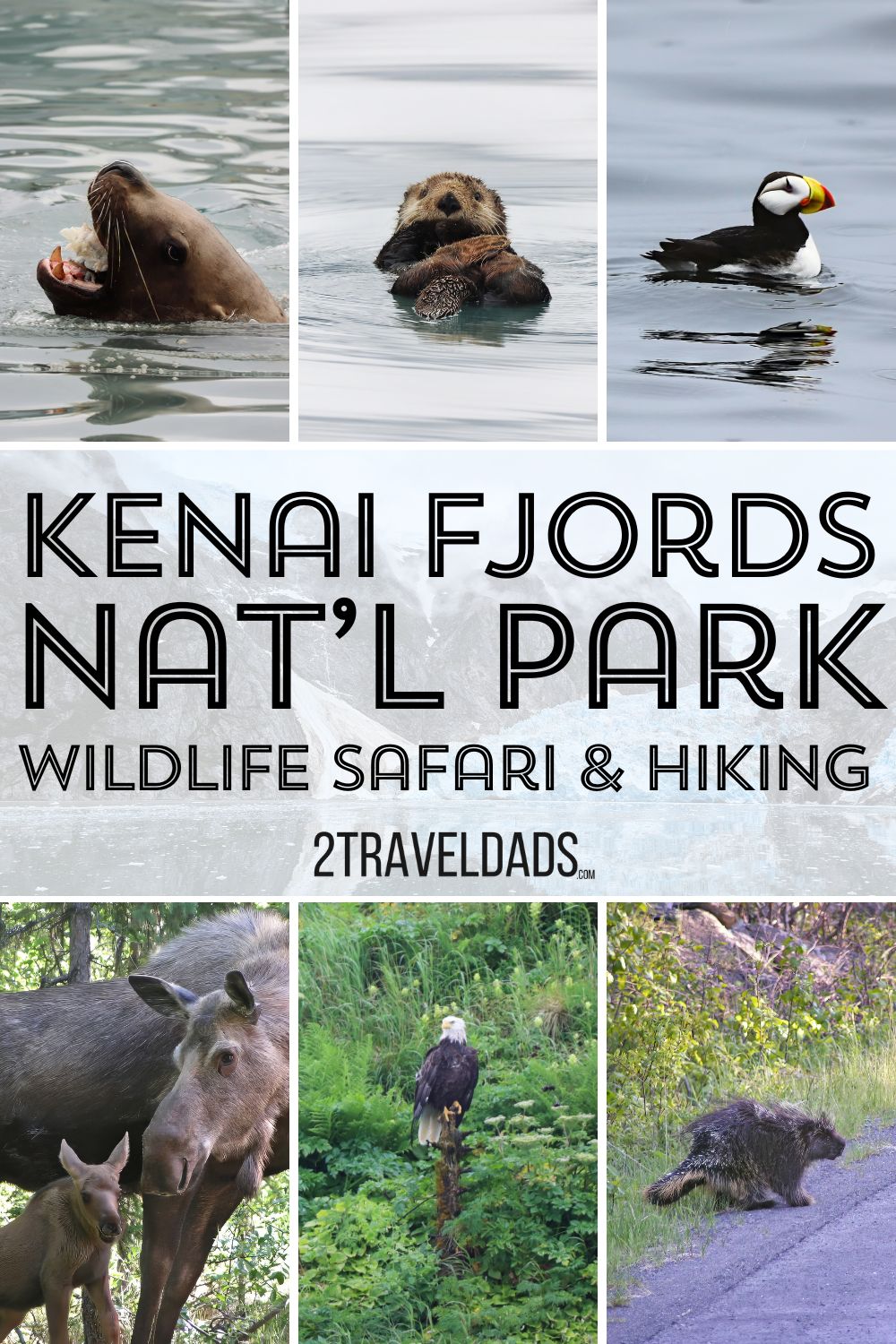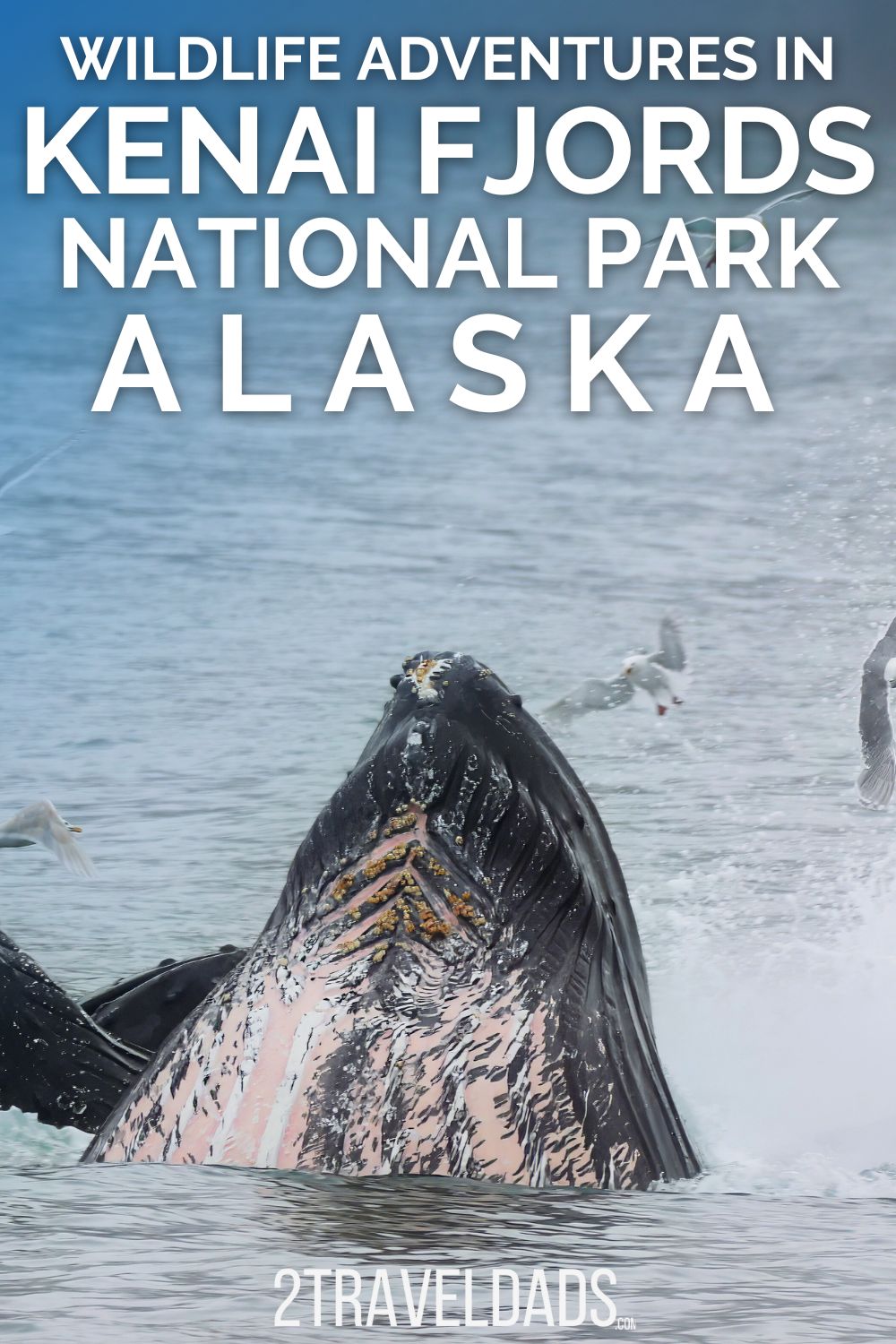I may be addicted to watching wildlife, and there’s nothing wrong with that. I love getting to see creatures in their natural habitat and safely observe them, photographing their movements and unique characteristics. There is so much wildlife in Kenai Fjords National Park that it warrants its own guide and tips for photography in the park.
Since I’ve been to the park at least 20 times (probably 30+ in reality) I’ve got some great tips for enjoying the wildlife in Kenai Fjords National Park. I’ve hiked and been on many boats, visited with kids and gone on my own. I hope you enjoy the photos and tips, and that YOU have your own incredible Alaskan wildlife safari when you visit. If you have any questions or want to share your own tips, please leave a comment or send us a note!
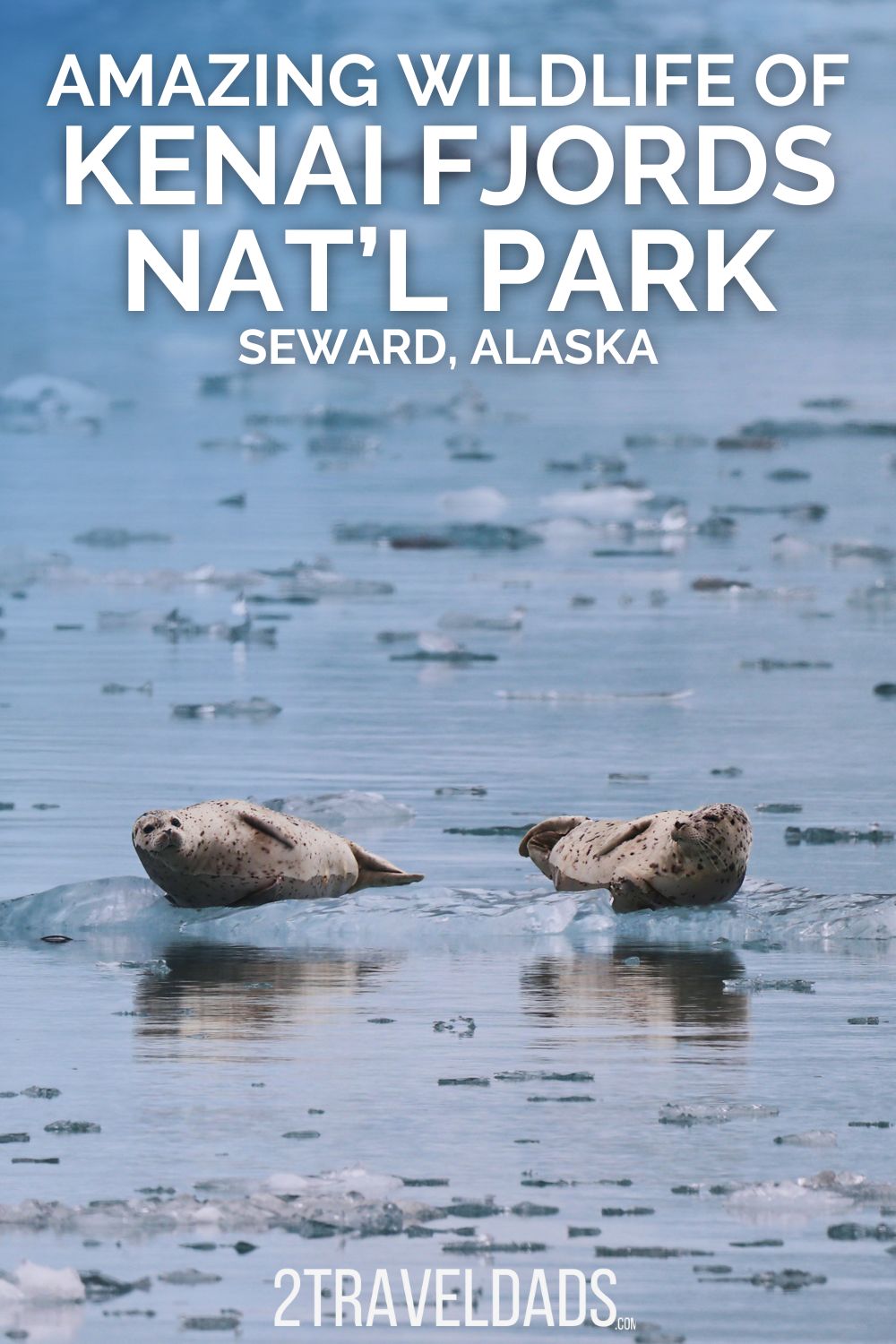
Before you get to the Kenai, be sure you’ve booked your tour!
- Kenai Fjords National Park Tour – 6 hours – includes lunch and some snacks, visits Aialik or Holgate Glacier OR do the same route and add dinner on Fox Island
- Northwestern Fjord Tour **MY FAVORITE** – 8 hours – includes light breakfast and lunch w/ some snacks, visits Northwestern, Northeastern, Redstone and Southwest Glacier (one fjord has them all)
- Resurrection Bay Tour w/ Fox Island – 5 hours – includes dinner on For Island at the day lodge
- Glacier Dinner Cruise – 5.5 hours – includes dinner onboard (drinks are extra), visits Holgate or Aialik Glacier.
- SPRINGTIME ONLY Resurrection Bay Tour – 4 hours, March – May – includes lunch, doesn’t visit any glaciers but is for wildlife watching
Wildlife in Kenai Fjords National Park
This is why I LOVE visiting Kenai Fjords National Park!!! The park is home to harbor seals, sea otters, humpback whales, orcas, porpoises, puffins, bears and more. Travel to Alaska is ALL ABOUT WILDLIFE! Having done the Kenai Fjords Tour more than 20 times in my life and hiked at Exit Glacier in three different seasons, I’ve only had one visit ever that we didn’t see whales (via boat), and I’ve never been skunked on wildlife (on land or sea). Even in bad weather there’s still ample wildlife to watch for. Here are my favorite species to see while exploring Kenai Fjords National Park.
Get the Alaska Nature Pocket Guide set here!
Marine Wildlife in Resurrection Bay and Kenai Fjords
The real attraction when it comes to seeing wildlife in Kenai Fjords National Park is the marine wildlife. I get it. Sunny summer days on the fjords means watching for whale breaches, spy hopping and flukes. It also means seeing seals and Steller sea lions sunning themselves on the rocky islands, and sea otters grooming themselves in the waves. Here’s what to look for when it comes to marine wildlife in Kenai Fjords NP, and really why this needs to be a part of your Alaska road trip itinerary.
Whales in the Fjords
I think the many whales are the biggest draw for a lot of people visiting Kenai Fjords National Park. I know I love them and never get tired of watching them. The most common type of whale you’ll see in the fjords is the humpback whale. We’ve seen them all through Hawaii (around Maui in particular) many times, but the activity and behavior here in Kenai Fjords is very different. I think the most incredible sight I’ve seen here is the group bubble net feeding phenomena. Amazing!
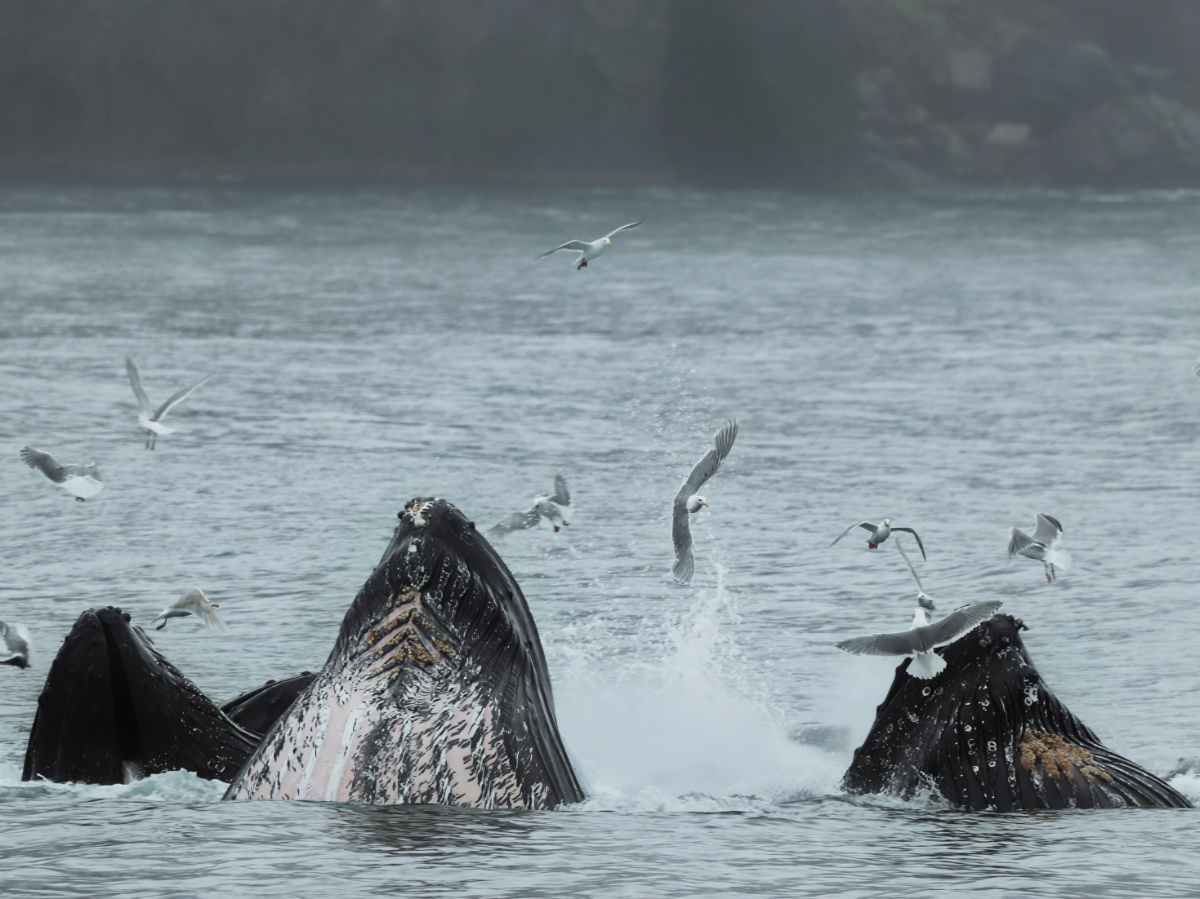
The gray, sei and minke whales aren’t as thrilling, but sometimes you’ll catch one of them breaching or just hanging out at the surface. If you’re really lucky, you’ll get to see a fin whale. Not quite as large a a blue whale but way bigger than a humpback, fin whales are gigantic and easier to photograph than gray whales, as they’re huge and tend to surface for longer before diving.
What is fun though are the orca whales, aka killer whales. There are both resident and transient orcas in Kenai Fjords National Park, so whether they’re breaching, spy hopping or hunting sea lions, they’re always cool to see. If you’re unsure if you’re watching resident or transient killer whales you can often tell by their behavior, and if you’re on a Kenai Fjords boat tour the captain or crew will probably let you know what you’re watching. Transient orcas tend to hang out closer to the shoreline and have a mellow surface behavior. Resident orcas are usually seen away from the shore and tend to do a lot of spy hopping and fishing behaviors.
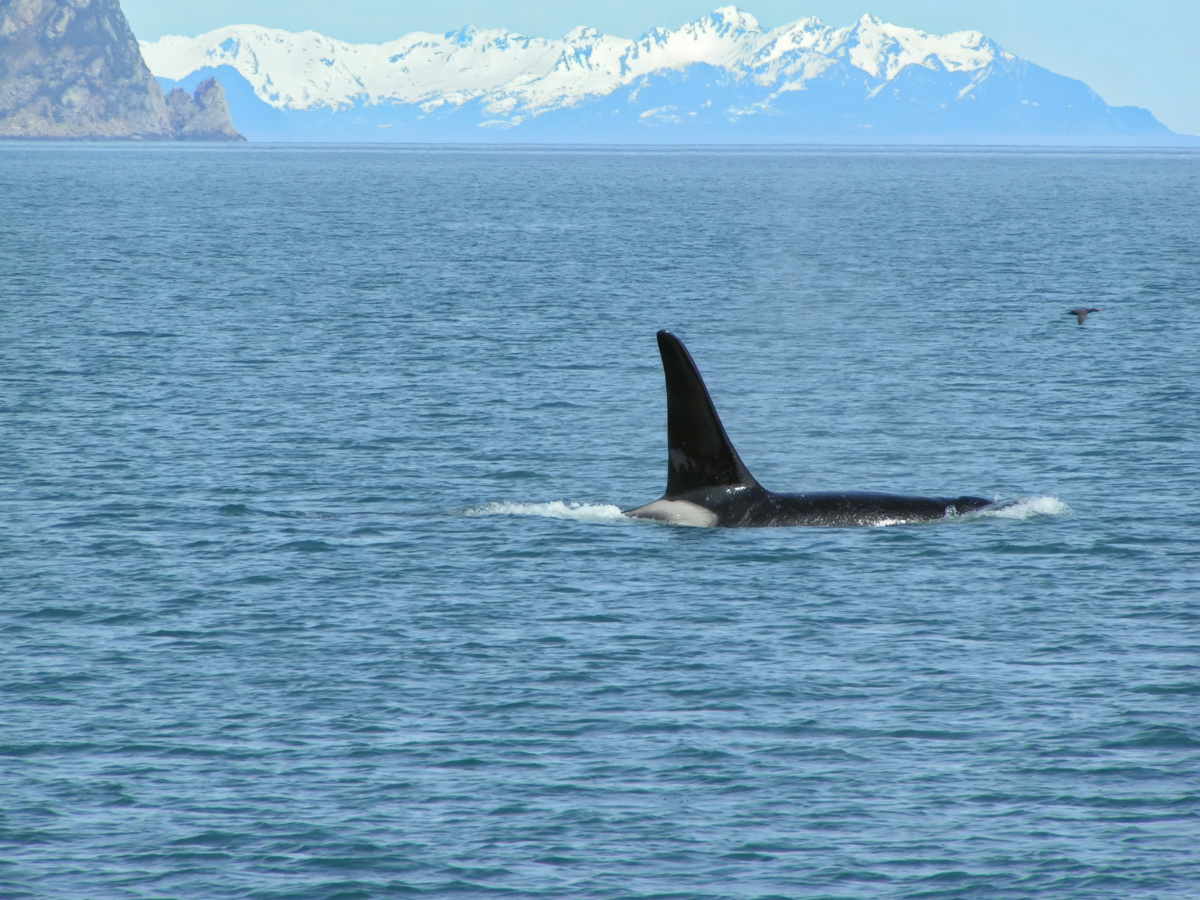
Sea Otters in Resurrection Bay
Let’s talk about sea otters, because they are the most adorable of all the marine mammals. From the moment you head into Resurrection Bay from Seward you need to be on the lookout for sea otters. There are thousands throughout Kenai Fjords National Park, often seen laying on their backs in the water eating something. If you’re lucky enough to visit in early summer, you can often see baby sea otters on their mamas’ tummies. So cute!
For those visiting Fox Island in Resurrection Bay, if you’re kayaking stay on the lookout for sea otters. They are curious, but cautious. They’re difficult to photograph from a kayak, but if you get a good shot, you’ll be so proud. Kayaking on the Kenai Peninsula is a fun way to see all kinds of wildlife.
Note: it’s rare to ever see sea otters out of the water because they do EVERYTHING in the ocean. The only time I’ve seen them out was in Glacier Bay National Park during our UnCruise Wilderness Legacy trip, and even then, it was just four or five otters and they were on an iceberg… and then jumped in the water when we got close.
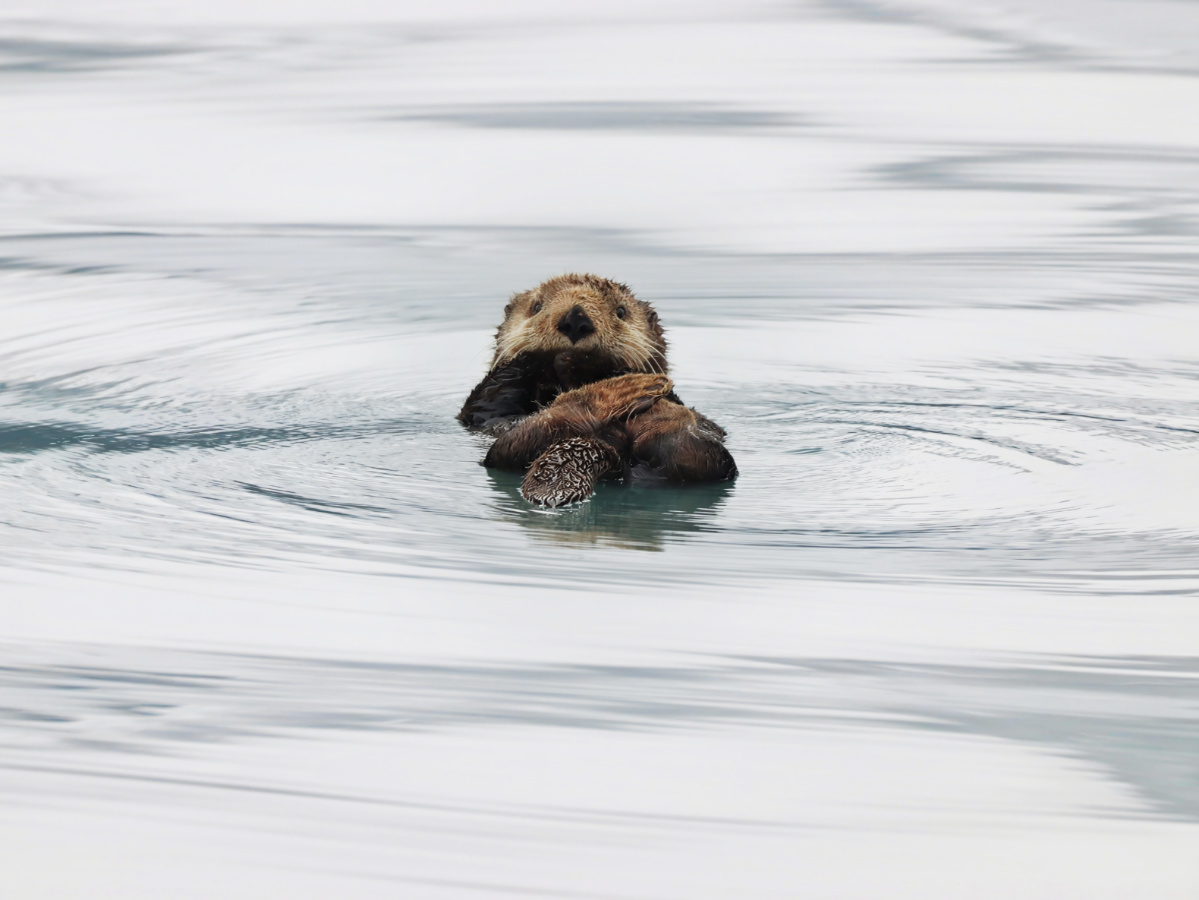
Harbor Seals and Steller Sea Lions
Sea Lions are always fun to see whether you’re traveling in Peru or Alaska. In Kenai Fjords there are MANY rookeries where you’ll get to watch countless Steller sea lions. They pile on top of each other, they jump and slide off rocks, they get hunted by orcas… Really, the Steller sea lions are some of the most fun creatures to observe.
Something that really stands out to me whenever we see Steller sea lions is how growly they are. California sea lions like you see in the lower 48 are very loud too, but they tend to bark like water-dogs. Steller sea lions have a very guttural growl that’s cool to hear when you’re out on the water.
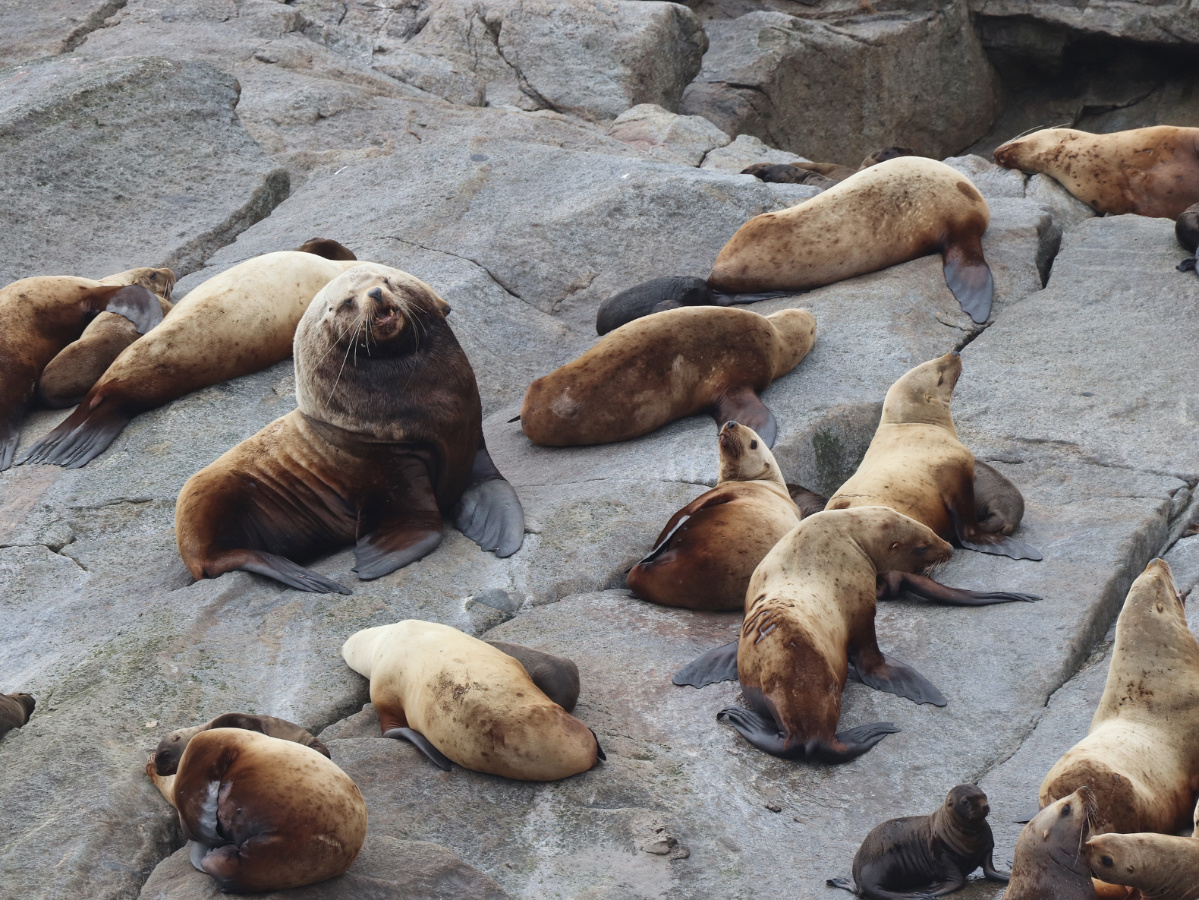
Another fun mammal to watch for, in particular when you’re at one of the tidal glaciers in the park, is the harbor seal. They are cute and curious, popping up all around. What’s the most fun to see though is when you find a harbor seal sitting on an iceberg. It’s adorable and it’s the perfect Alaskan wildlife sight. You may even see harbor seals in the small boat harbor in Seward before ever even getting out on the water!
Note: you won’t get to see fur seals in Kenai Fjords National Park. Fur seals are found further our and farther north, such as out in the Aleutian Islands or up past Nome.
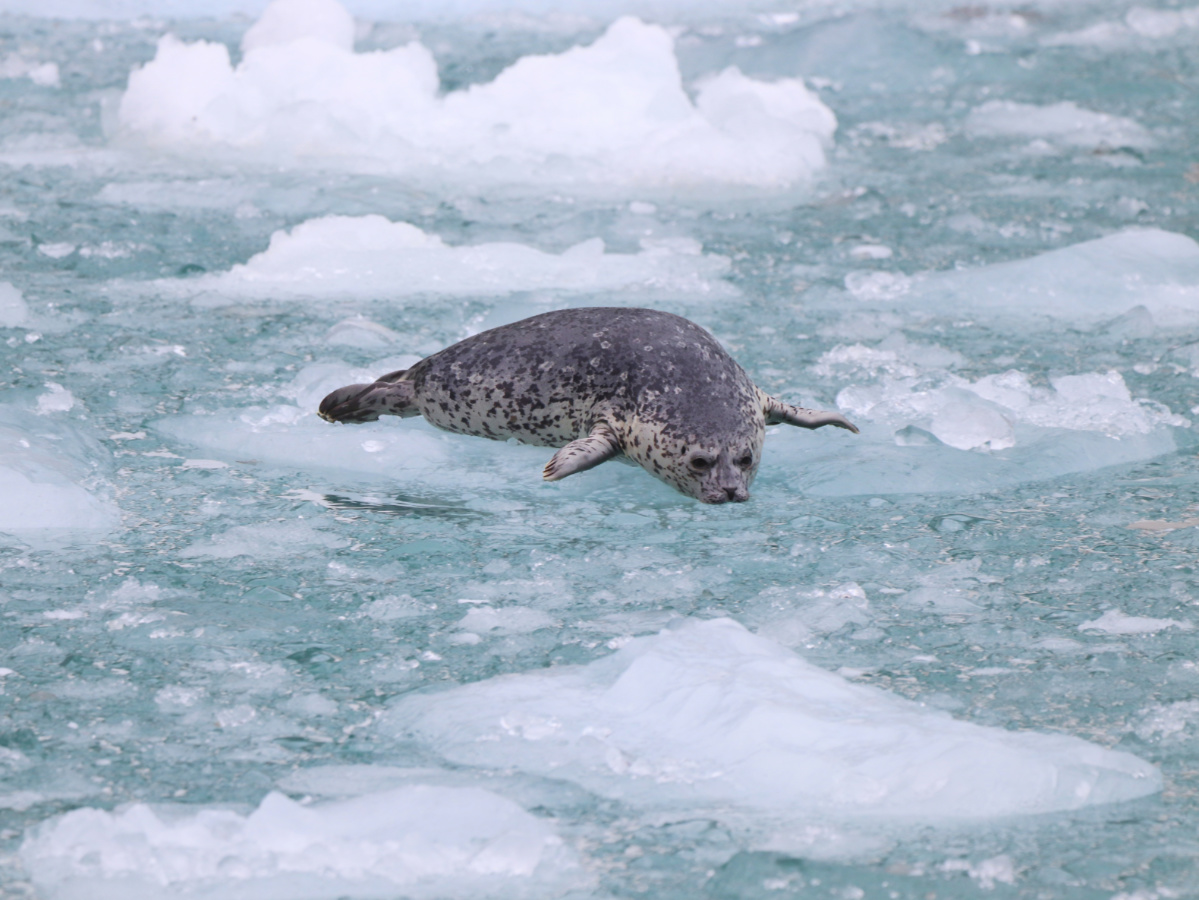
Porpoises and Dolphins in Alaska
It’s very common to see both harbor porpoises and Dall’s porpoises when you do a Kenai Fjords boat tour. The harbor porpoises are relatively slow and they tend to keep their distance from the boats, but the Dall’s porpoises are like lightning! Riding the bow or the wake, Dall’s porpoises are some of the fastest marine mammals you’ll see. They are very difficult to photograph, so aim for video instead.
Tip: if you’re recording video in a high quality format at high speed, you can lift still images from it. This is a great way to get a good photo of a Dall’s porpoise. They really are just so fast and sneaky!
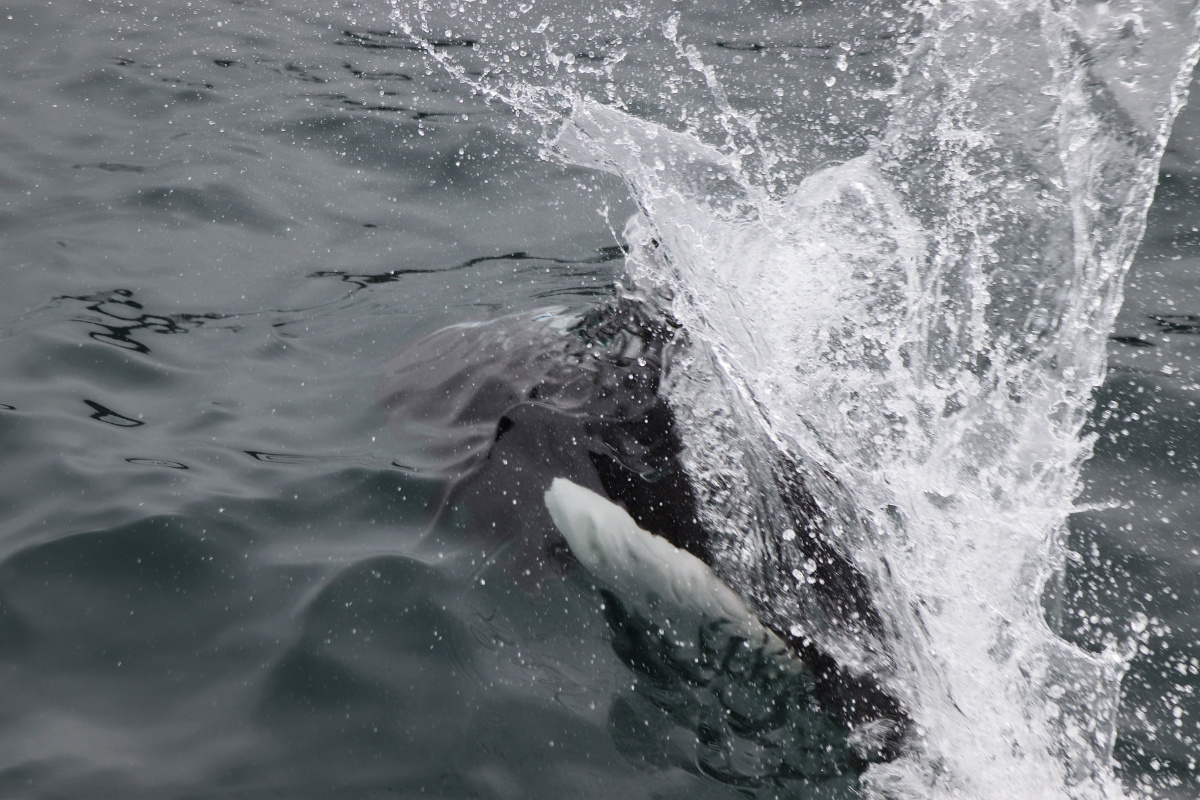
Dolphins are not common to see in Alaska, but if you’re lucky you’ll get to see a pod of Pacific white-sided dolphins. I’ve seen them a few times and they are impressive. They love to jump and follow ships, although rarely bow riding. They remind me of the Hawaiian spinner dolphins that you see around the Big Island or Kauai. Once I was on a Kenai Fjords tour and a super pod of Pacific white-sided dolphins merged. There were hundreds all around us and it was amazing!
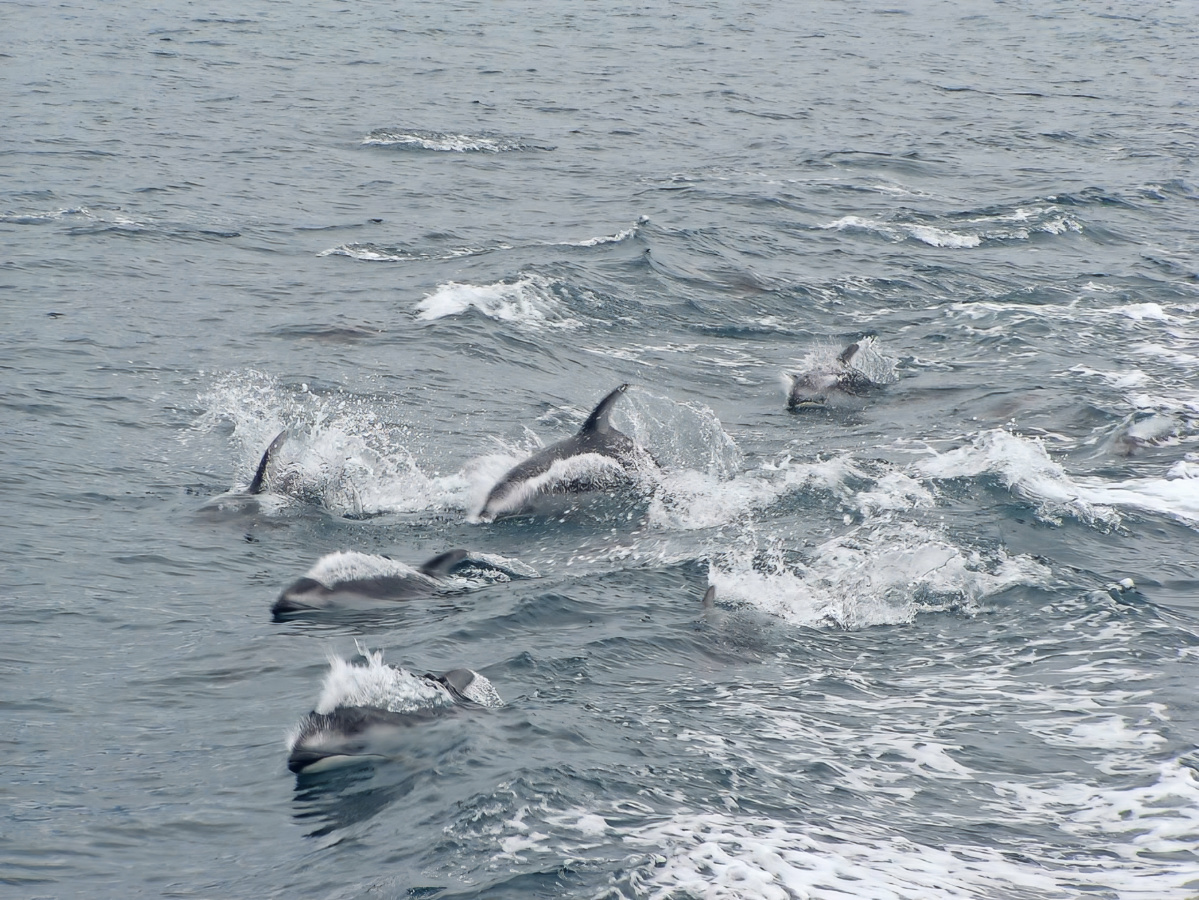
Land Mammals to Watch For
Doing a boat tour in Kenai Fjords National Park might not strike you as a great way to see bears or mountain goats, but you’d be surprised. The Kenai Peninsula and the islands of the fjords are full of wildlife, not just what you see in the water. And then if you set some time aside to make it to Exit Glacier just north of downtown Seward, you may get to see even more wildlife!
Bears: Epic Alaskan Wildlife
Alaskan brown bears and black bears can both be seen from the boat when you do one of the tours of the park. Remember that even though you’re on a boat, the Kenai Fjords are arms/waterways that go between stretches of land connected to the Kenai Peninsula, so nearly any wildlife you can see up in the Chugach Mountains you can see here in Kenai Fjords National Park.
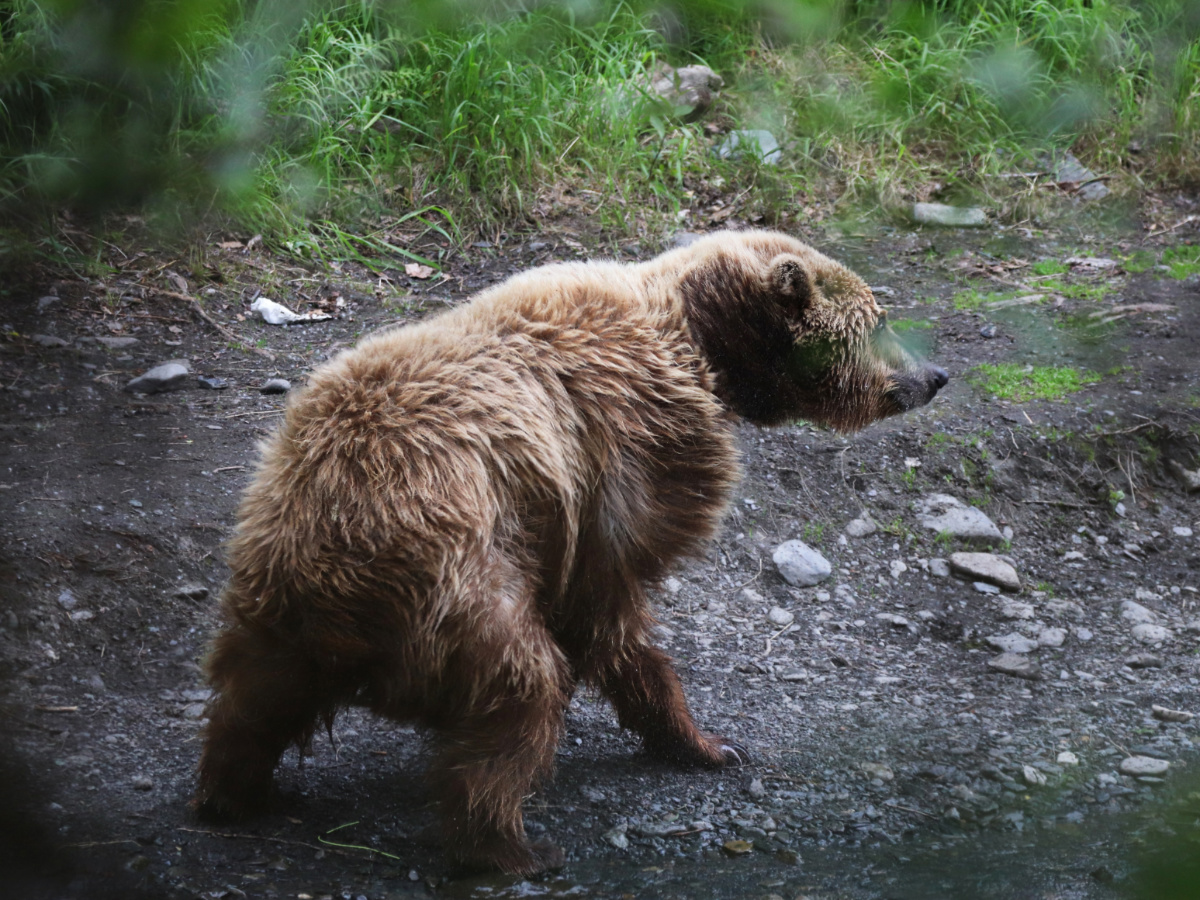
As I said, I’ve seen both Alaskan brown bears and black bears here in the park. They are very different and you cannot expect all brown bears to be brown and black bears to be black. While all of the black bears I’ve seen in Kenai Fjords have been rich black fur bears, there are also brownish and even blonde ones sometimes. And it’s the same for Alaskan brown bears, although they tend to error more on the lighter side than dark.
Note: You also need to be alert for bears if you’re hiking at Exit Glacier. They don’t just hang out in the fjord areas, but are in the campground and on the trails near Exit Glacier. One night we were dining at the Seward Windsong Lodge looking across the river at a mountain in the Park and saw four brown bears cross the ice field. There are bears EVERYWHERE!
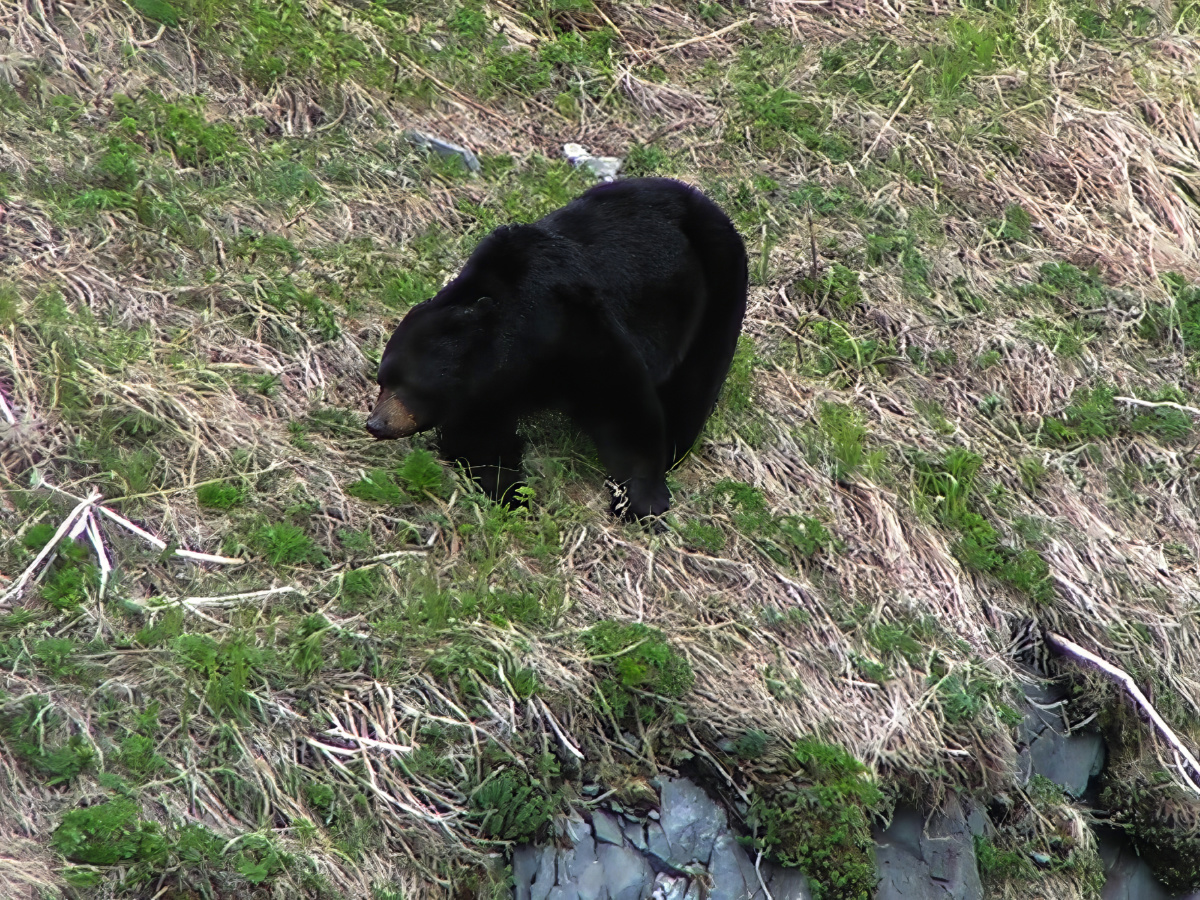
Ungulates (hoofed animals) in Kenai Fjords
My favorite wildlife to see in Kenai Fjords National Park or anywhere, in moose. Let me first say that it’s highly unlikely to see a moose from the boat when you’re doing a tour, but if you’re visiting Exit Glacier you’ve got great chances of seeing moose on the Resurrection River and its streams. Morning and evening are the best times, and typically before mid-June and after August.
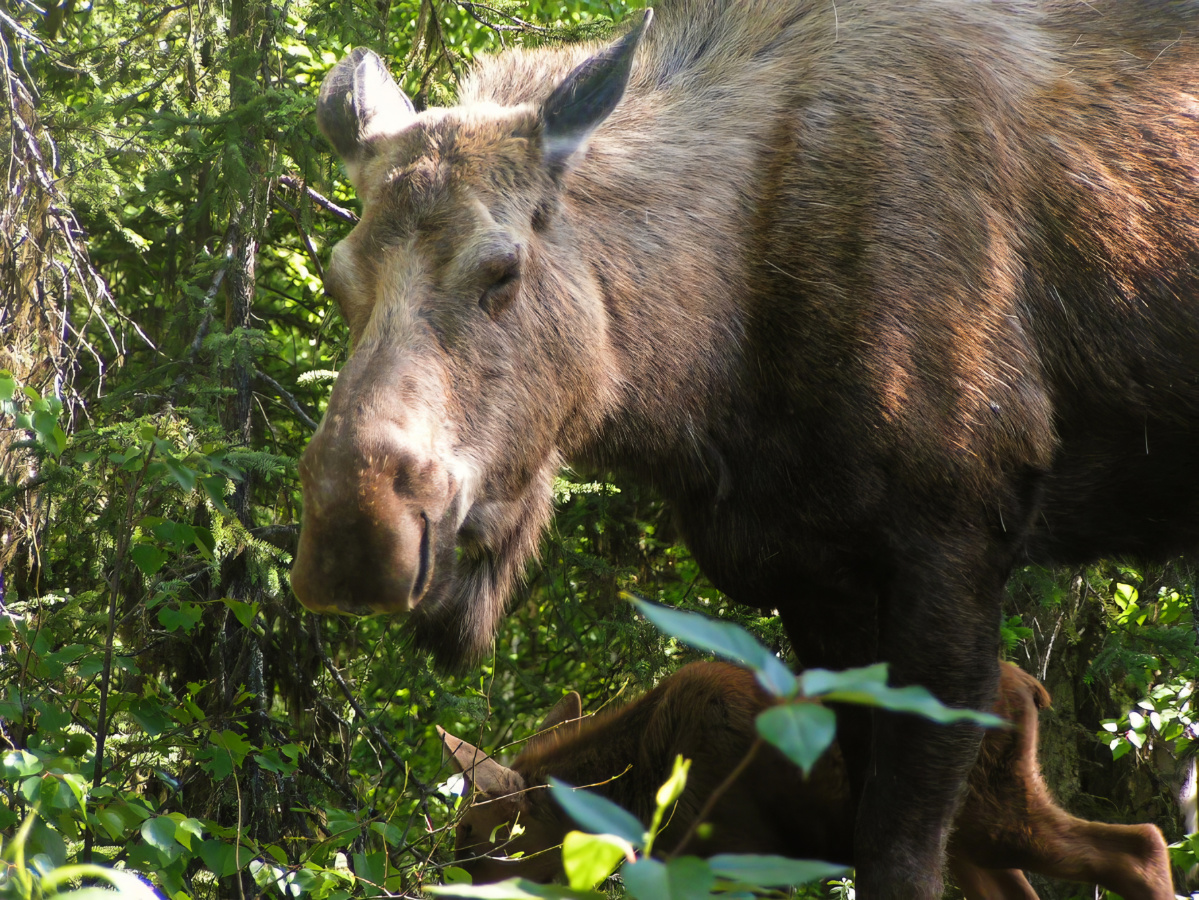
From the boat tours, you’re likely to see deer on the different islands. Also found on the shores and slopes of the park are Dall sheep and even mountain goats. It’s more rare to see these guys than deer or bears, but if you get to spot them they’re pretty cool. Dall sheep look like a beautiful white version of bighorn sheep like you see in Banff or Yellowstone National Parks. You can also see Dall sheep in Denali National Park and Wrangell-St Elias National Park.
Mountain goats tend to be more deep into the fjords, so as you approach a glacier, keep your eyes on the rocky cliffsides and hills. As you travel along the shore towards Holgate or Aialik Glacier, you might get lucky. Also, the Kenai Fjords Tours to Northwestern Glacier are a great opportunity for seeing mountain goats.
Tip for another trip: my favorite places to consistently see mountain goats are actually in Mount Rainier National Park in Washington and Glacier National Park in Montana. Both have healthy populations that tend to hang our where visitors hike.
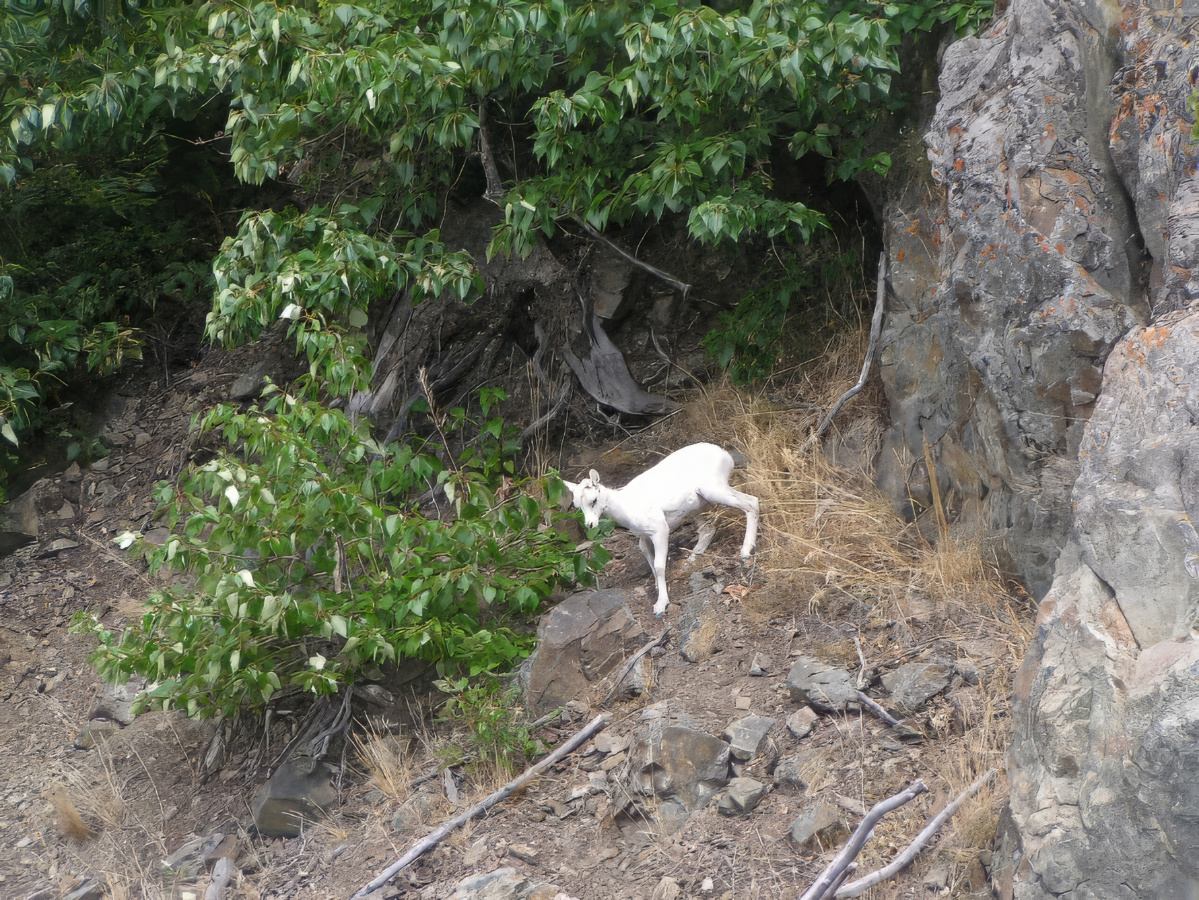
Can I see Porcupines in Kenai Fjords NP?
My fingers are crossed for you. Yes, there are porcupines and I’ve seen them both while hiking and just driving into the Exit Glacier area. Porcupines are bigger than you might expect, and while they may not throw quills at you like you may have been taught as a kid, if you touch a porcupine you’ll get hurt (and you should NEVER touch wildlife). Like a lot of wildlife in Kenai Fjords National Paark, early morning and dusk are the best times to see porcupines.
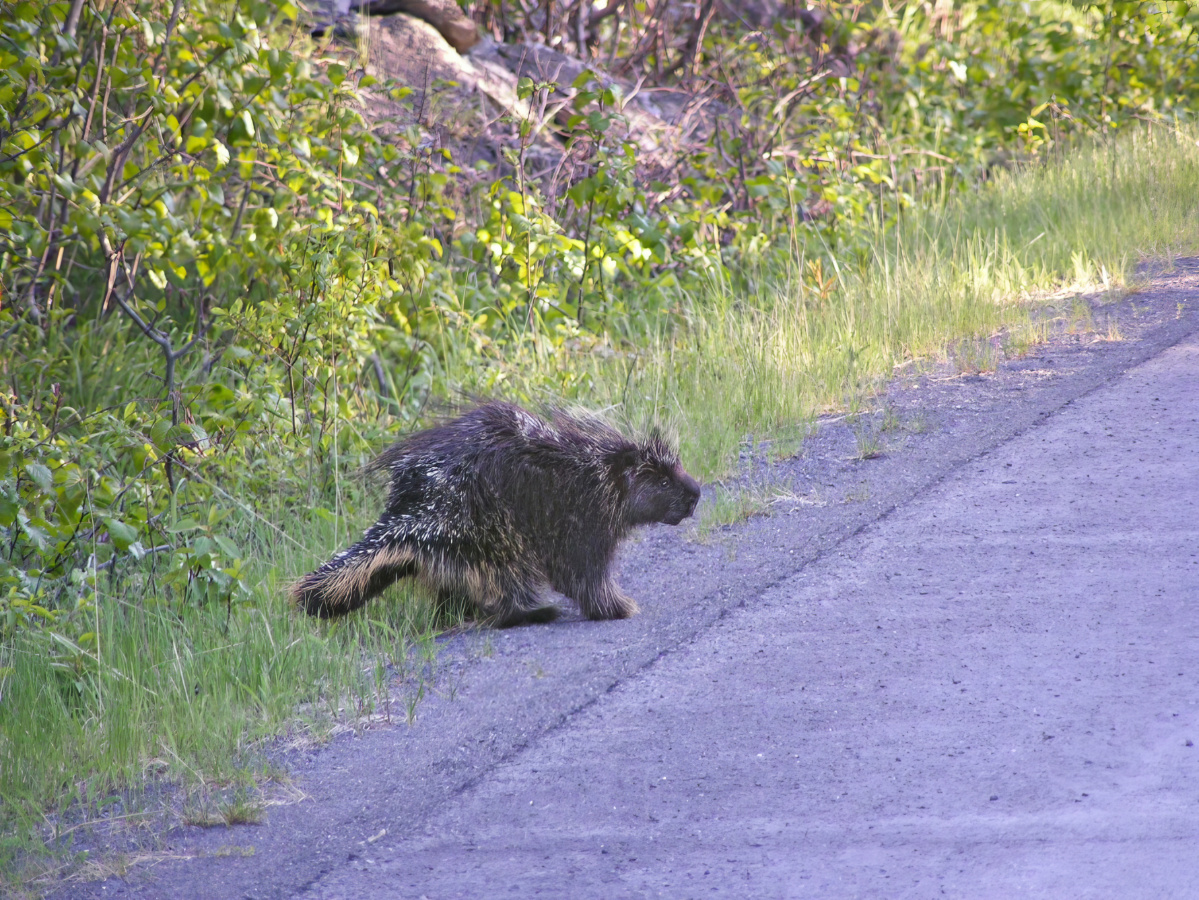
Birdwatching in Kenai Fjords National Park
There are lots of types of birds to watch for when you’re in Kenai Fjords National Park. Bald eagles are very common, both on the land at Exit Glacier and when you’re doing a boat tour into the fjords. Oyster catchers, murrelets, common murres aka guillemot, and more can be seen both on the rocky islands and out at sea. But what are the coolest bird to see when you’re here? These are my top picks:
Get the Alaska Birds pocket guide here!
Seeing Puffins in Kenai Fjords National Park
Puffins are everyone’s bucket list bird to see when they come to Alaska. No, they are NOT penguins (those guys are at the South Pole), but they are adorable black and white birds that DO fly. They have the brightest beaks and feet, and are hilarious to see take off from the water.
There are two types of puffins to see in Kenai Fjords National Park: horned and tufted puffins. The horned puffin looks more streamlined with a black peak at their eyes. They look very much like the Atlantic puffin that you can see in Maine or Iceland. Horned puffins make their nests in the rocks, so tend to be more hidden when they’re on land, but you’ll see them flying, floating between dives and sometimes perched in a clearing. They’re my favorite of the two types of puffins in Kenai Fjords National Park.
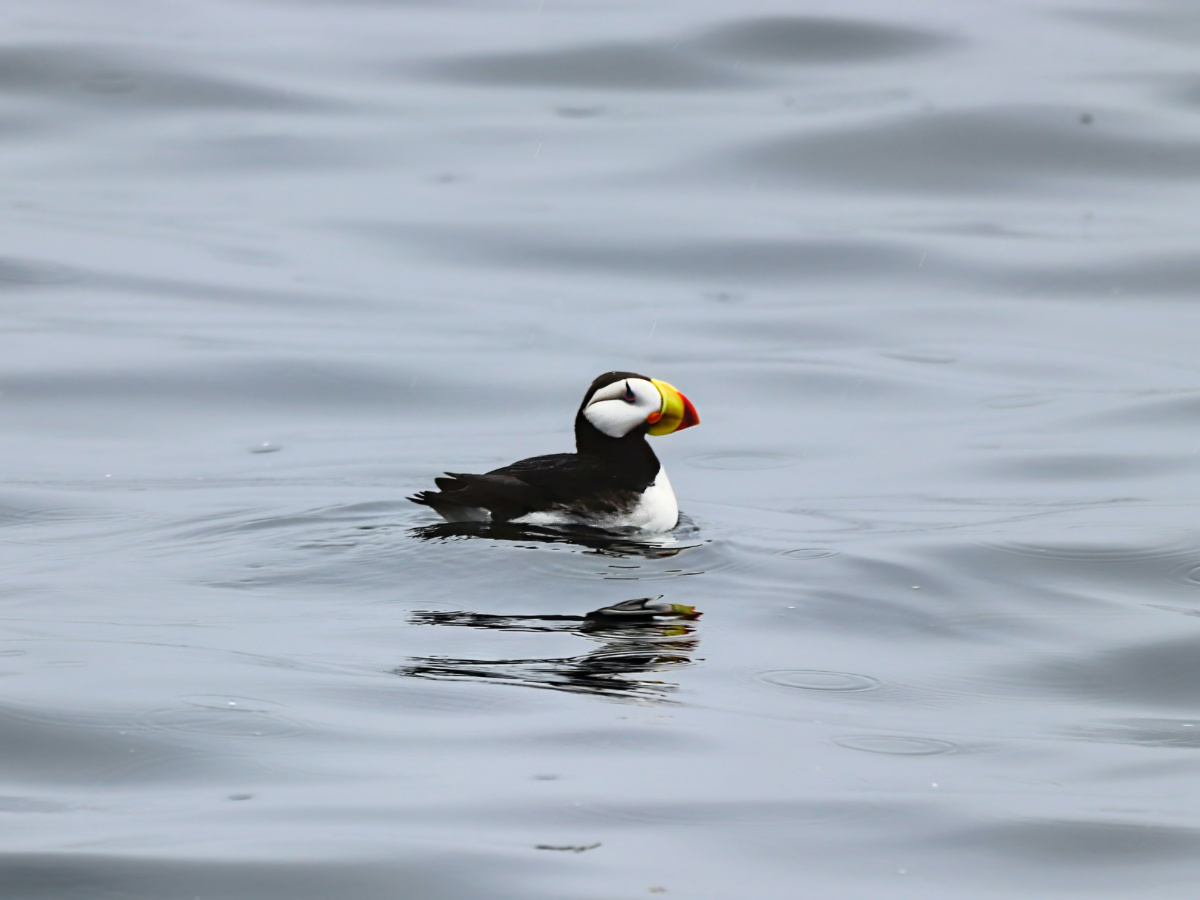
The other type of puffin to watch for is very clearly different, with the tufted puffin having yellow, wispy feathers on its crown. Tufted puffins are more common, both here in Kenai Fjords, and down into Southeast Alaska, including Glacier Bay National Park. Tufted puffins are very unique and strike me as more visitor-tolerant, as they don’t disappear as quickly when spotted as the horned puffins do. They’re both beautiful and fun to observe in Kenai Fjords NP.
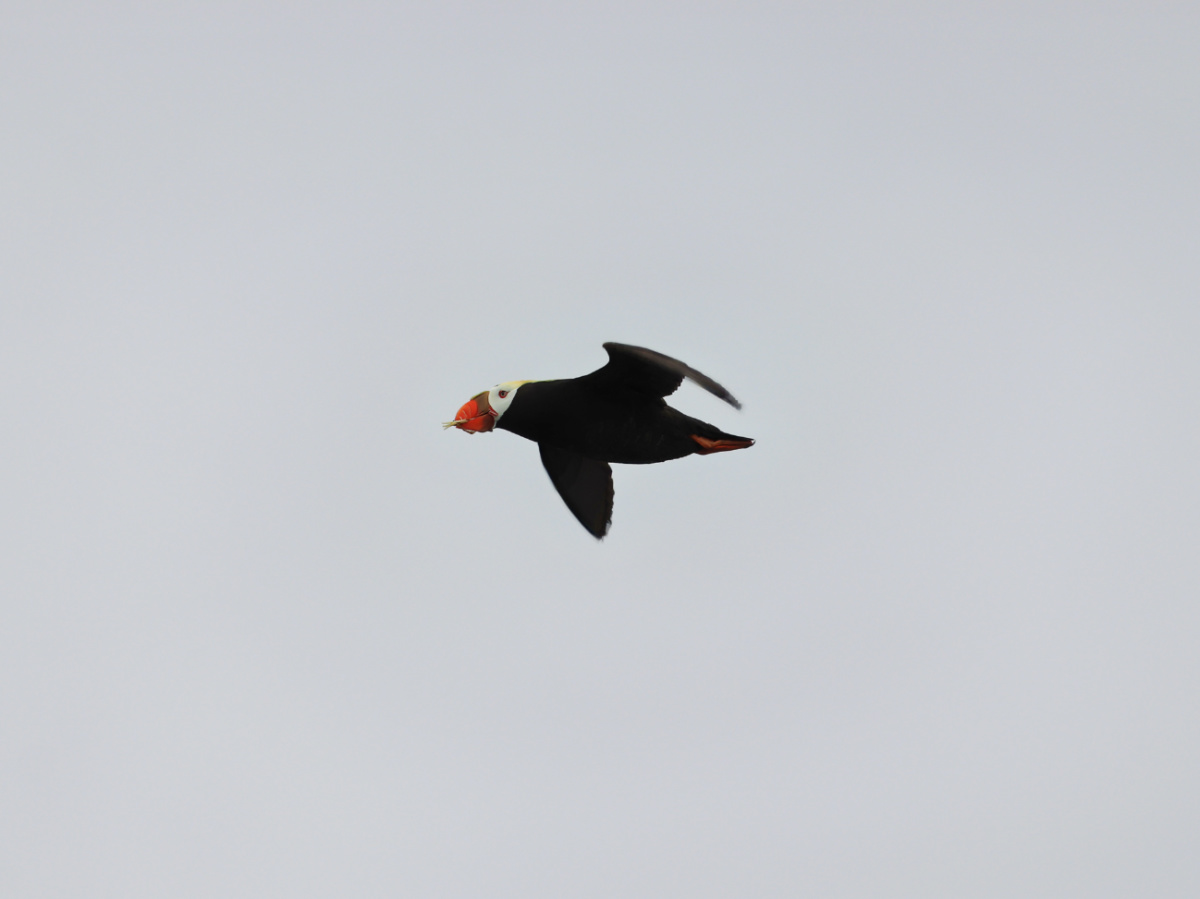
Bald Eagles on the Fjords
When you first arrive in Alaska it’s so exciting to see a bald eagle… and then you realize how many there are and that they are everywhere… like pigeons, but bigger and more beautiful. Even though they’re so common, I still really enjoy watching them. From the small boat harbor in Seward, throughout Resurrection Bay and deep into the fjords, there’s no shortage of eagles. Keep your eyes peeled for them on the rocky island, flying with their prey or even just perched on the Seward waterfront.
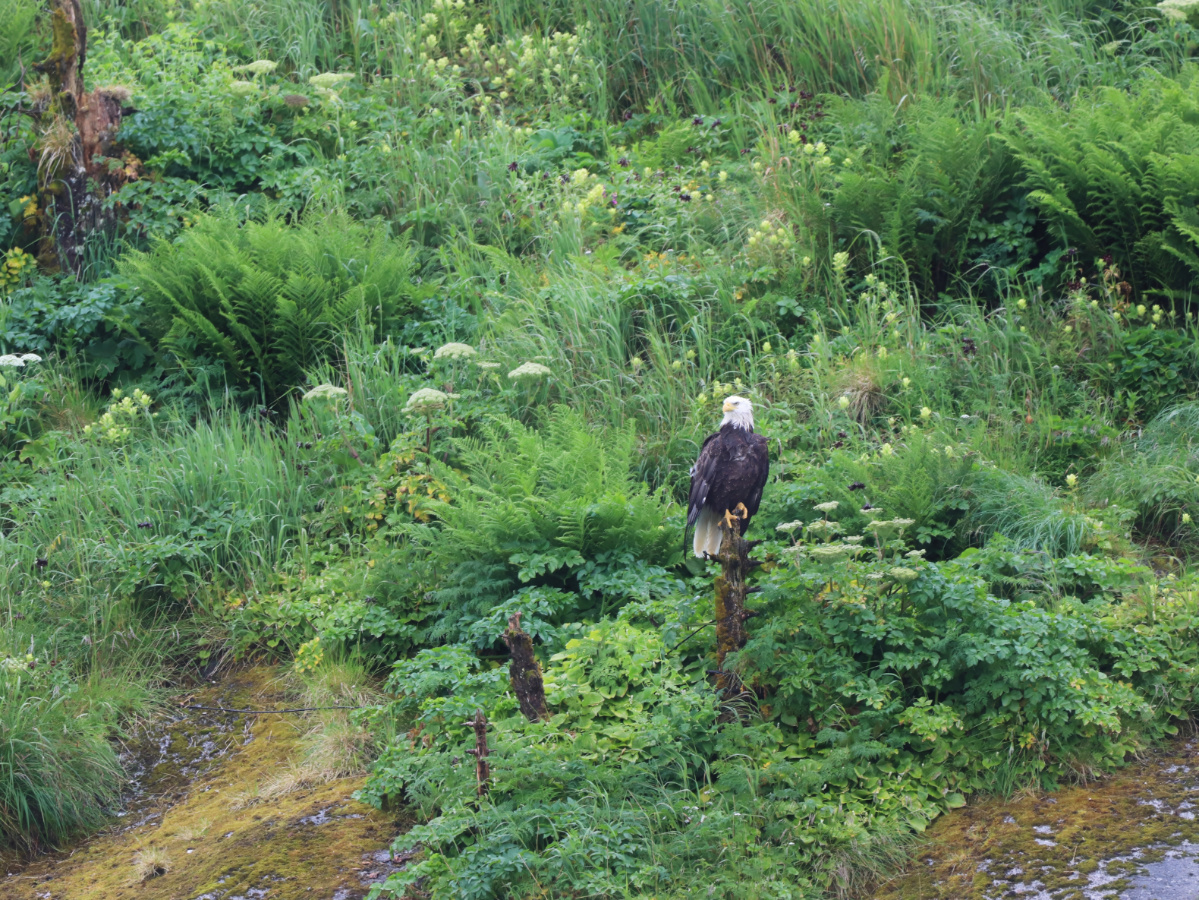
More Birdwatching in Kenai Fjords National Park
Of course there are more birds here. Birds are the most prolific wildlife in Kenai Fjords National Park! I love seeing the rhinoceros auklet. This is a relative of the puffin and has a cool feathery horn, eyebrows and sideburns. They’re skittish, but if you can get close to them out on the water, they’re really cool to see. Bonus: watch for parakeet auklets too! And if you get a good photo, send it to me!
Another beautiful bird that you can see lots of is the common murre, also known as the guillemot. This bird looks a bit like a penguin, but it can fly, it clusters in rookeries on the rocks, and you’ll see them in small flocks floating on the ocean.
When hiking at Exit Glacier, keep your eyes and ears out for owls. I’ve never seen one here, but I was talking to a ranger that mentioned that they have a fair number of both great horned owls and screech owls. I love owls, so believe me when I say that I’ve tried to spot them here. There must be owls, and I will see one in Kenai Fjords someday!
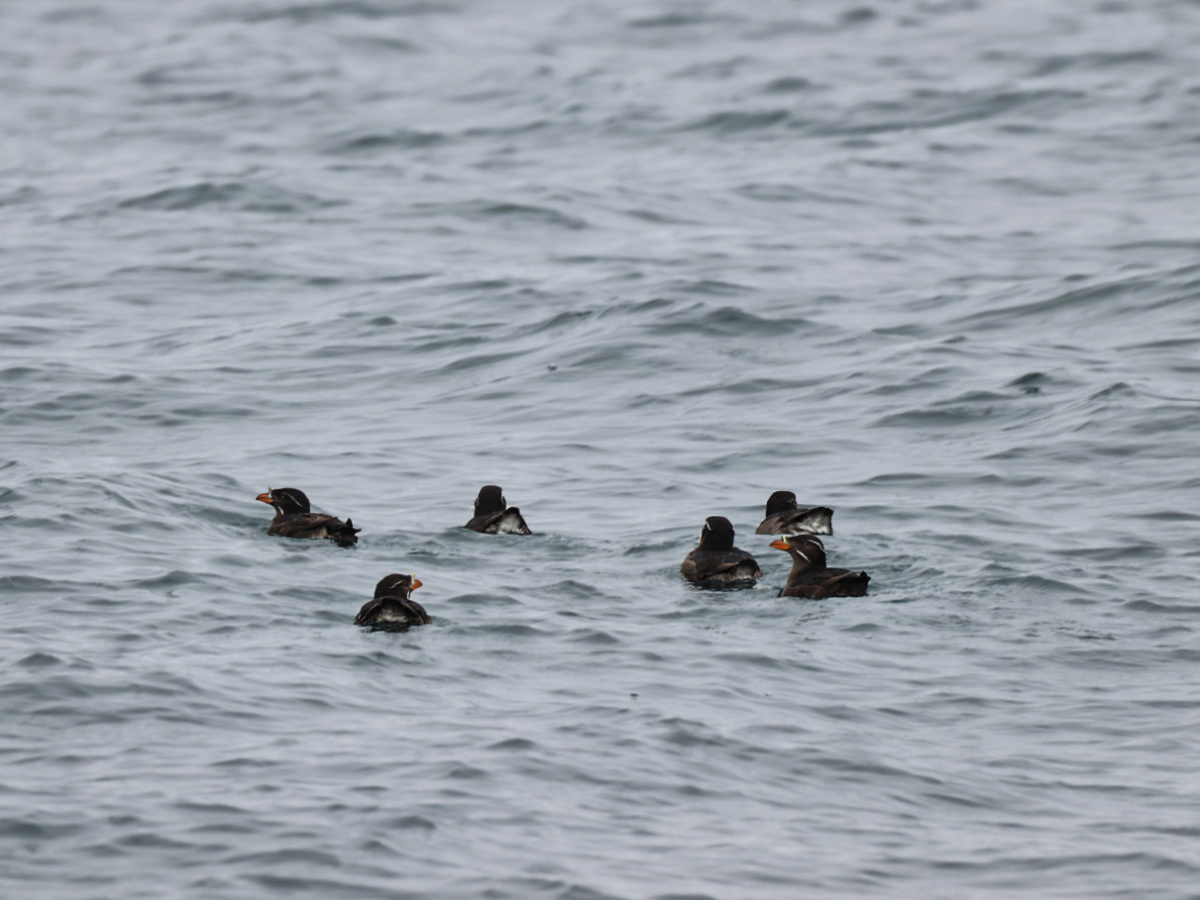
Tips for Glacier Photography in Kenai Fjords
First an foremost, enjoy your time in Kenai Fjords NP. It takes a lot of planning and money to get to visit, so have the best time possible. If a part of that is taking awesome photos, then you’re in the right place! Here are my tips for getting good shots of both glaciers and wildlife in Kenai Fjords National Park.
Be sure to check out our sister site, My Alaska Trip!
Wildlife on Icebergs and in the Water
When you’re doing a boat tour of Kenai Fjords National Park, you’ll have a few options for where to be on the boat throughout the tour. When it comes to humpback, gray and fin whales, it’s best to be higher up for getting a more broad view of the animals as they surface. Even when humpbacks are bubble net feeding, a higher view allows for better photos of the whales. Sometimes, the higher view is also good for photographing sea otters and seals, but this higher vantage point can limit capturing their faces.
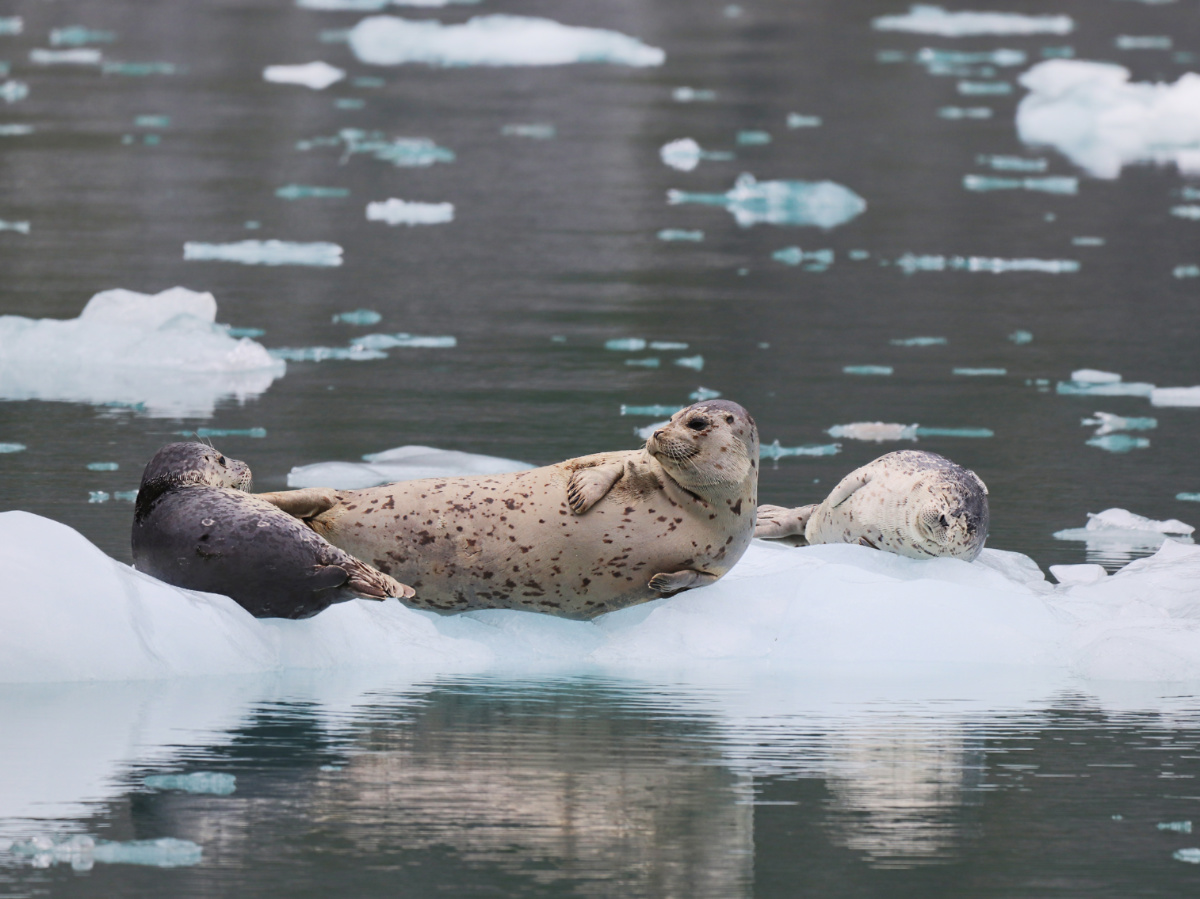
For orcas and sea otters, as well as seals both in the water and on icebergs, the lower vantage point offers a better view. For killer whales, photographing them from as near the water as possible allows you to get their beautiful dorsal fins more clearly, as well as blowhole exhales. For sea otters and seals, you’ll be able to get their faces better, as well as capture their environment more fully.
When harbor seals or sea otters are sitting on icebergs, they tend to relax… until the boat gets to a certain amount of closeness. If you can photograph them from a lower level, you’ll be able to get the animal AND the shades/tone of the icebergs, which makes for a beautiful photo.
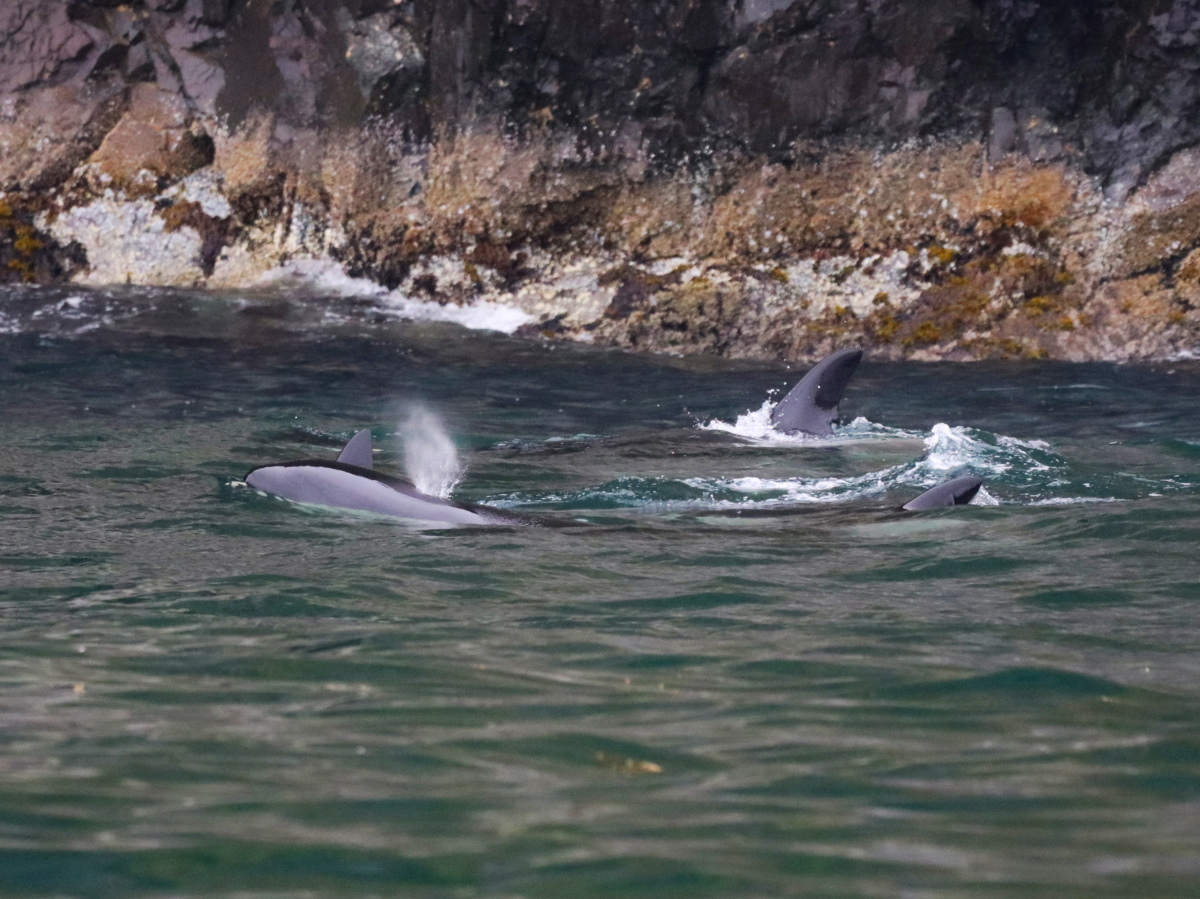
Glacier Calving and Icefalls in the Fjords
None of us can control the weather BUT you’ll actually have a better time photographing glaciers, icebergs and icefalls if it’s overcast to icky-gray. Bright sunny days make the glacier brilliant white, especially next to the moraines that run down their centers. You WANT to have a gray day for getting good pictures of the tidewater glaciers. When the sun is muffled, the deep blues of the ancient glacial ice are extra vibrant and beautiful.
When it comes to icebergs, they too are more blue in the overcast weather. Also, when it’s sunny and you’re photographing icebergs, and in particular the bergs with seals resting on them, you’ll have the problem of balancing light. The icebergs will reflect the whitest white and make the darker animals lose their detail due to the extreme naturally occurring contrast. There’s only so much you can fix in post-production.
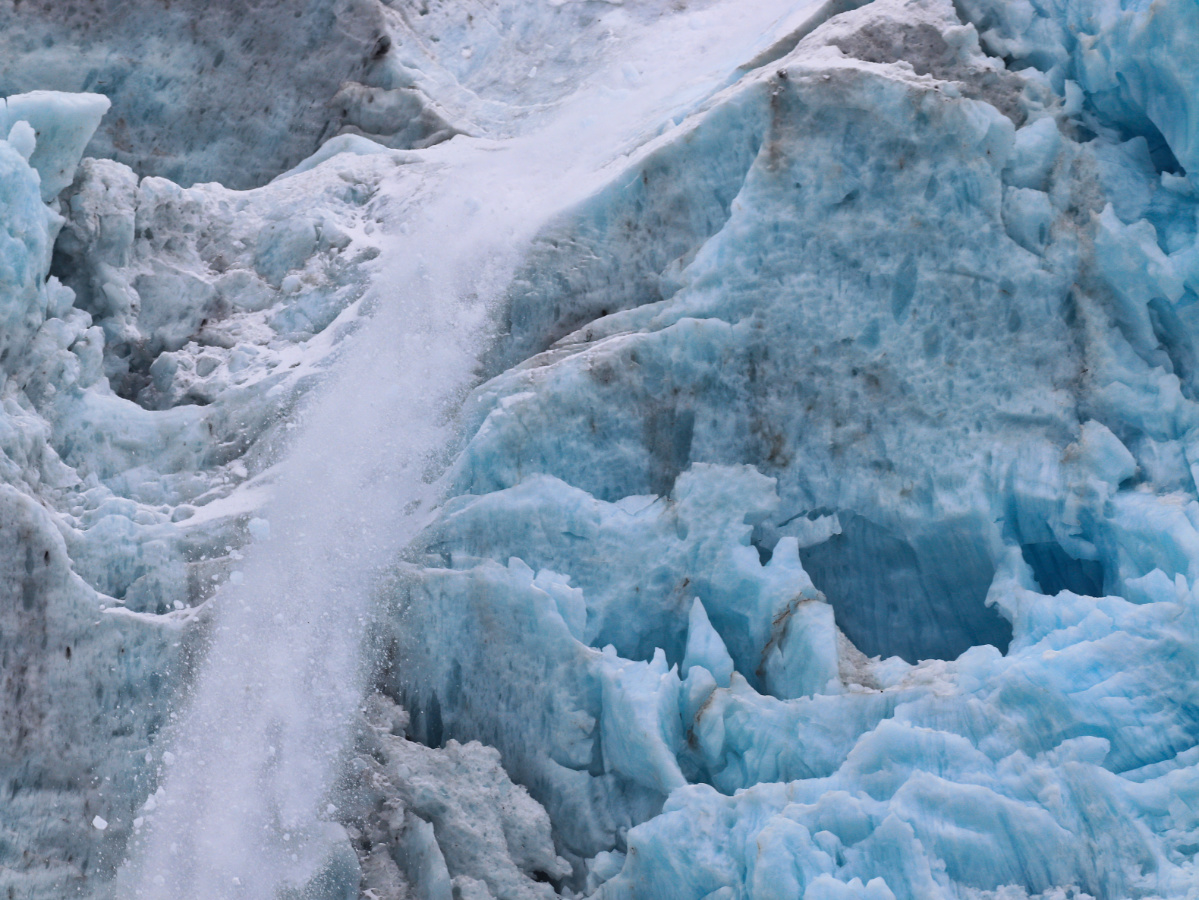
For capturing icefalls and glaciers calving into the sea, there are a few ways to make sure you get good photos. Here are my steps for getting good glacier event photos:
- take a photo of the relative area you’re watching and tweak your camera settings until the light balance looks good, erroring on the darker side / faster shutter side of things.
- choose an area to watch with your finger on the shutter button and your camera in sport / continuous shot mode. Start with your lens being wider and then zoom in for how you want to frame your shot once the action begins.
- after your initial captures, if it’s a longer lasting event, double check the last photo you took to see how the light and focus is and then quickly adjust your settings.
One of the biggest mistakes I’ve made over the years with any photography is not taking a quick moment to review my photos and update my camera settings. That 1 or 2 second check can mean the difference in amazing photos versus “maybe next time.”
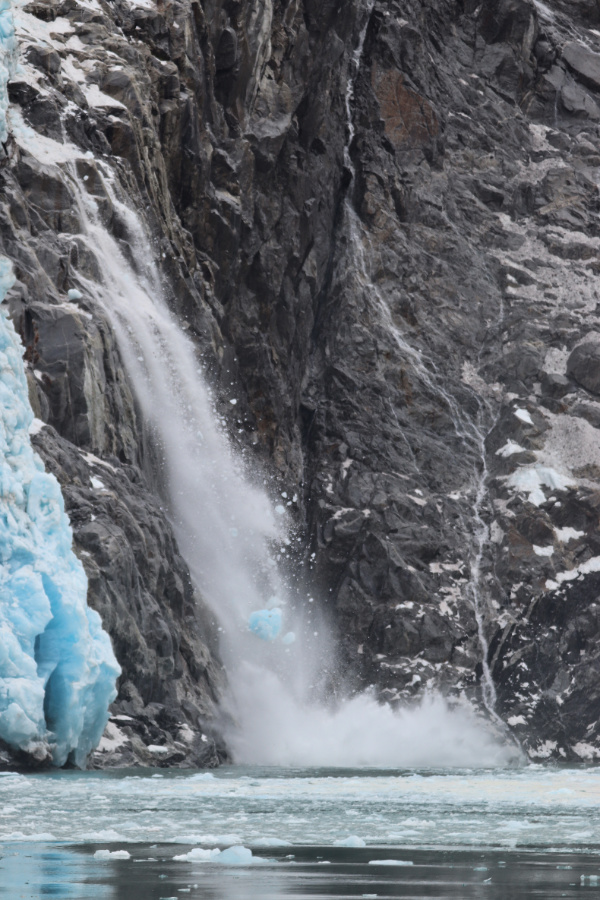
Photography Gear Recommendations
Before jumping into cameras, let me start by saying that I am NOT a technical photographer but have worked professional as a photographer since 1997 with my first job being a photographer’s assistant and having my first wildlife photography piece published that same year. So, I’ve been doing this a while and ultimately I believe that you can do great things with nearly any equipment. Yes, the fancier and more expensive stuff is great, but you don’t have to drop thousands of dollars to capture amazing photos.
As you look at my recommendations, keep in mind that most cameras can be upgraded with good lenses. The key thing to do with any gear though is to read actual reviews from users versus looking only at manufacturer camera specs.
Camera Bodies for Amateur or Professional Use
Budget option: I’ve had a variety of cameras over the years, but my favorite and the one that I use for both hobby and professional photography is the Canon Rebel T7i. It’s a solid, hardy DSLR camera that does very well for travel, wildlife and even portrait photography. I’ve had other Canon Rebels in the past and they’ve always been great. Get my exact camera here!
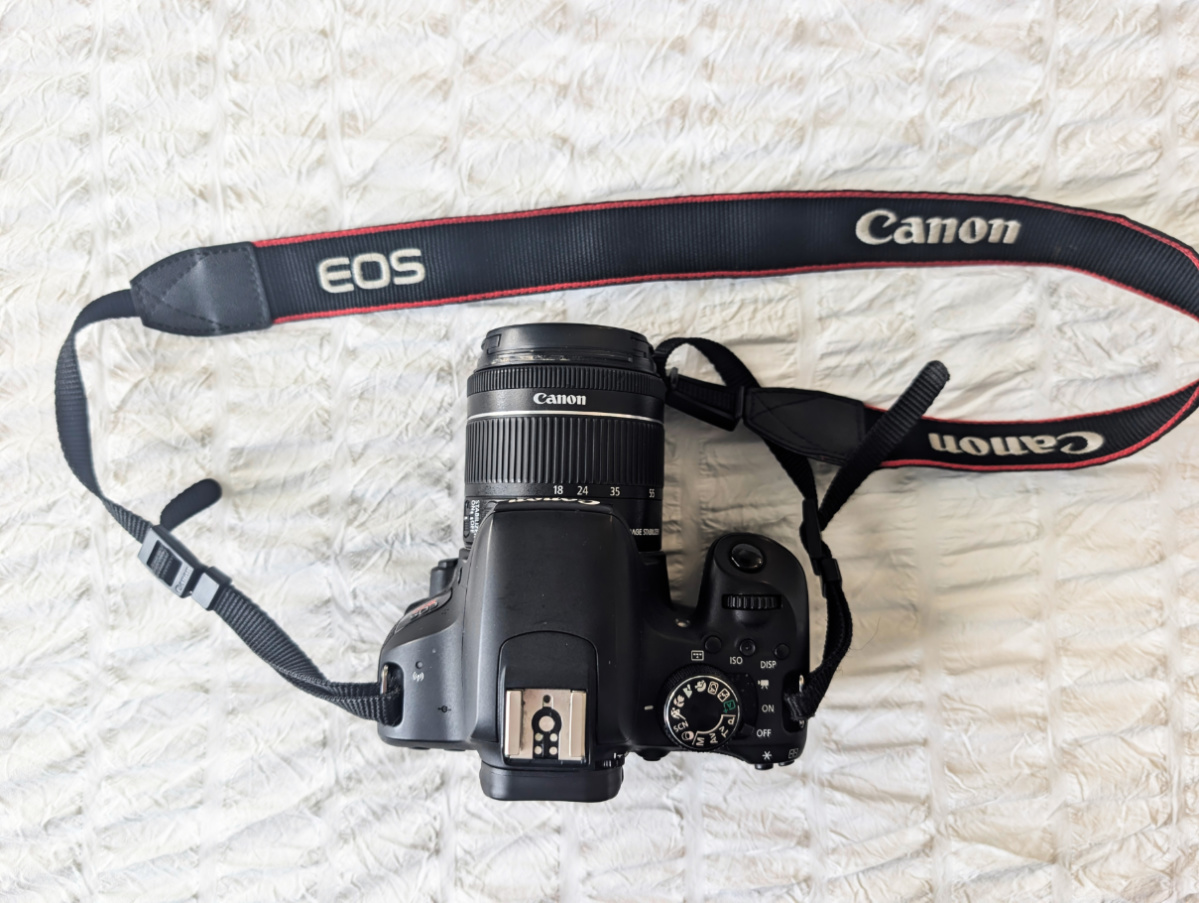
Spendy but great: If you’re thinking about a mirrorless camera, the Canon EOS R6 does an amazing job. It’s fast with impressive photo clarity, and it’s remarkably quiet, especially in comparison to my DSLR camera. When it comes to an affordable camera in the land of insane mirrorless costs, the Canon EOS R6 is the best combination of cost and quality. Mirrorless cameras that are worth investing in start at around $2000 USD, so if you’re ready to take that plunge, it’s worth it to get something that matches quality and cost. Get the Canon EOS R6 here!
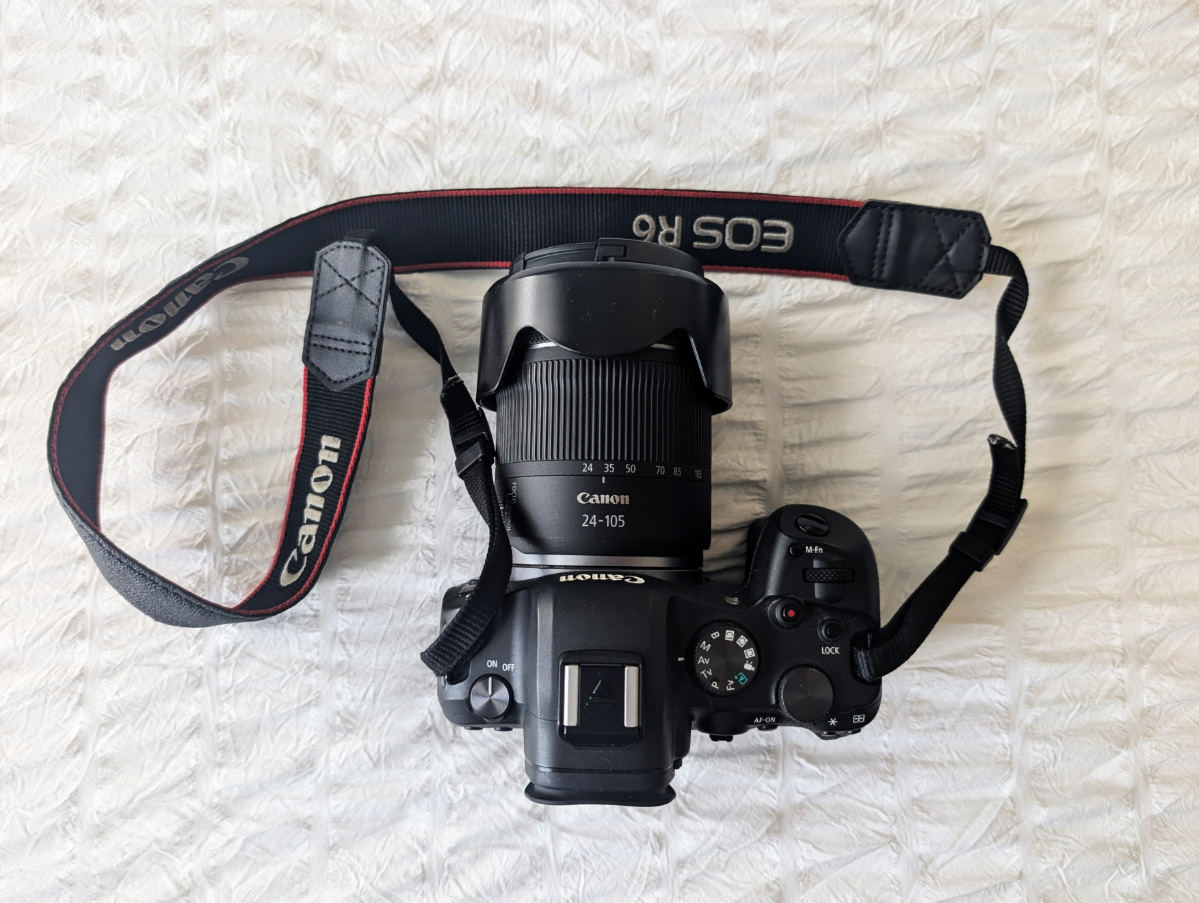
Telephoto Lens Recommendations
Before you get all shopping happy, keep in mind that not every lens is interchangeable with every brand of camera or model. There are specific lenses for specific brands and models and YOU MUST look at the lens details to confirm that the lens is compatible with your camera body. And also remember that some lenses might be compatible with “model x4” (as an example) but then the camera might be a “model x4A” or something.
With my Canon Rebel T7i I use three basic lenses: wide angle (basic), 250mm and a 600mm. I would love to have an 800mm but we’re talking about a heavy and expensive lens at that point. I use the wide angle for landscape, macro and easy shot framing. I use the 250mm for fast wildlife shots, distant landscapes and close range wildlife photography. This is my 250mm lens for my Canon Rebel T7i.
My favorite lens is my 600mm. I use this for shooting anything that’s awesome and that I want good close ups of. There are several settings on my lens that I don’t use, so I have it set just how I like it. It’s been a great lens for birdwatching and getting amazing wildlife shots in National Parks. Get the Sigma 600mm here!
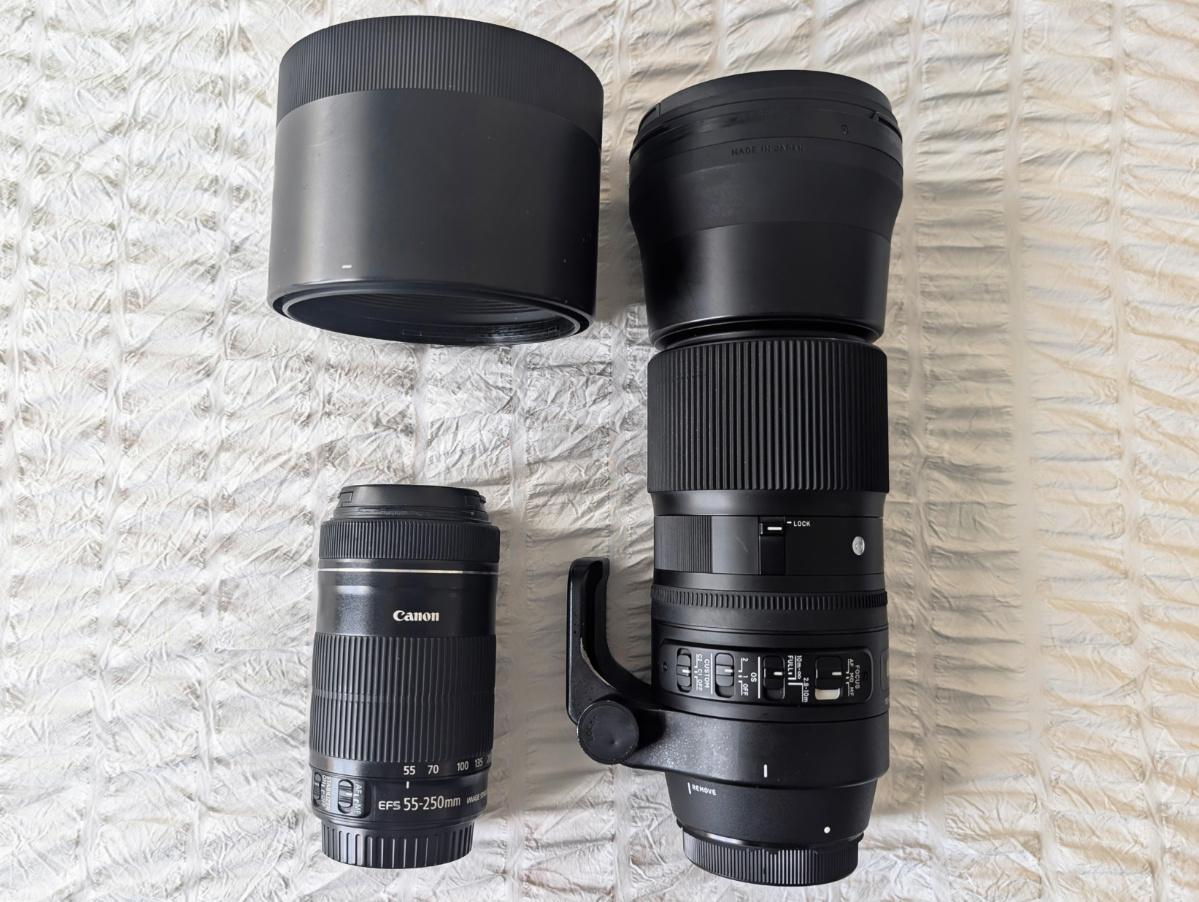
Favorite Binoculars for Wildlife Watching
Sometimes you don’t want to be stuck behind a camera snapping photos the whole day, and when that’s the case a good set of binoculars can be just as satisfying. We always have at least one pair of binoculars with us, but more often we have a large pair and a small pair. Traveling with kids, it’s important to have a set that’s easy for them to use and allows them to see wildlife easily.
The best binoculars we’ve ever use, and we first came across them during our trip to the Peruvian Amazon, is the Vortex Diamondback. These are nice, small binoculars that are incredibly clear with great magnification. They run around $200 but are really hardy and do an incredible job. Get the Vortex Diamondback binoculars here!
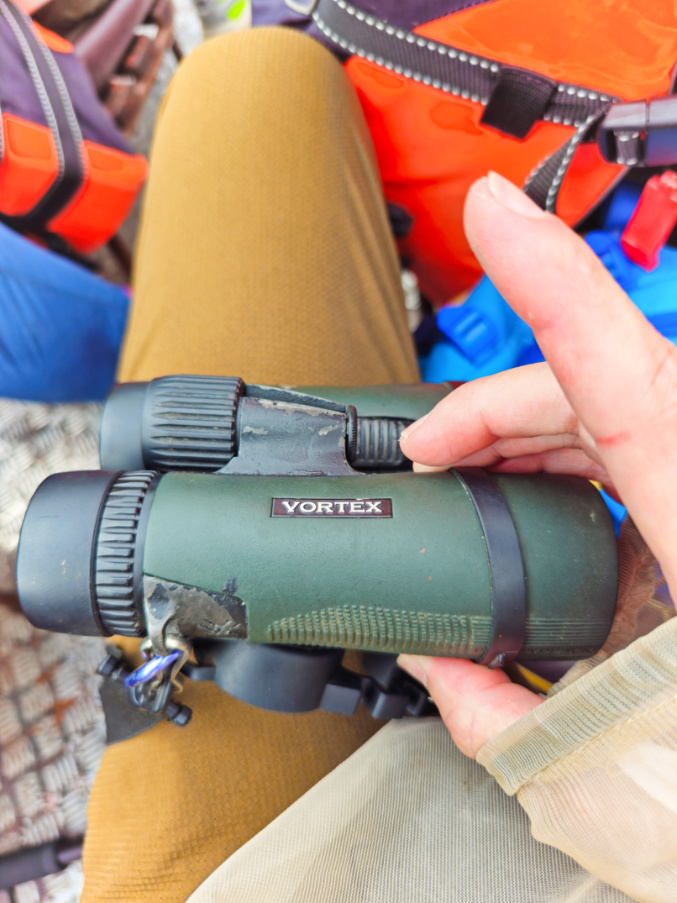
Wow! I didn’t realize I was going to have that much to say about wildlife in Kenai Fjords National Park and my favorite photography tips. Good times. I hope this is all helpful and gets you excited to experience some of Alaska’s most beautiful creatures and landscapes. If you have anything to add or any questions, please leave a comment or send us a note. We’re always happy to share more!
